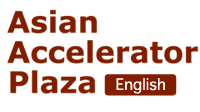NSRRC adopted KEKB-type superconducting cavity for Taiwan Photon Source project

|
National Synchrotron Radiation Research Center (NSRRC) in Taiwan chose the KEKB-type superconducting cavity to be installed into the synchrotron storage ring of the Taiwan Photon Source (TPS), the third generation synchrotron light source currently under construction right next to the site of existing accelerator Taiwan Light Source (TLS).
There are two main streams of manufacturers in the world of superconducting radio frequency (SRF) designed for light source facilities; each with its pros and cons. After carefully considering all possible factors and procedures, the KEK approach in SRF was eventually adopted for the TPS project in order to cope with future operational modes. Collaboration and technology transfer of the 500 MHz SRF module, in the case of KEK as KEKB design, is a de facto requirement to ensure delivery of the following: development of the superconducting radio-frequency modules, including the development of 1.8 K cryostat for harmonic SRF modules; technology transfer on a higher-order-modes (HOM) damped superconducting cavity for high-intensity storage rings. Mitsubishi Heavy Industries, Japan, received the order to fabricate three cavities scheduled to be delivered to NSRRC in 2012.
TPS will be among the brightest light source facilities in the world with an accelerator of 3 giga-electron volt energy, 518.4 meters in circumference, and a low-emittance synchrotron storage ring. As part of the major advanced scientific research projects under National Science Council in Taiwan, the new facility is expected to start commissioning in 2013.
